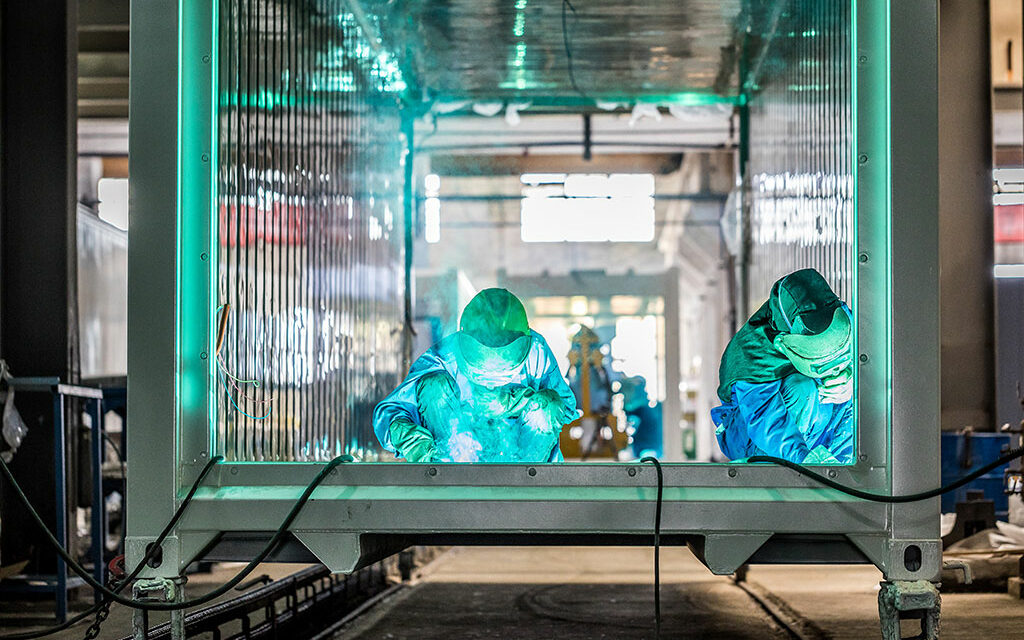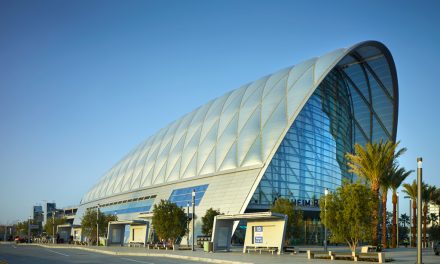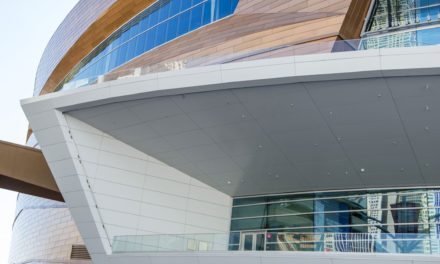Hope on Alvarado is first in a series of housing solutions for the chronically homeless in Los Angeles using advanced modular construction
A designer and builder team has unveiled a pioneering modular development with the potential to transform housing for the chronically homeless. Hope on Alvarado, in Los Angeles’ Westlake neighborhood (166 S. Alvarado Street), is created by HBG Construction Corp, KTGY Architecture + Planning and Aedis Real Estate Group. The project, with wrap-around supportive services for homeless individuals, is the first of a series of superior-quality Hope On developments in Los Angeles using an advanced, new modular design. Collectively, they may be the largest series of modular housing projects in Los Angeles and will assist in alleviating the city’s homeless crisis. The 84-unit development was unveiled with a viewing event where multiple building sections were lifted into place, demonstrating the efficiency of construction.
Two additional developments using the same technology – Hope on Broadway and Hope on Hyde Park – recently received City of Los Angeles Measure HHH funding, a $1.2 billion bond to build approximately 10,000 units of supportive housing. The City chose Hope on Broadway ($6.7 million HHH loan) and Hope on Hyde Park ($9.3 million HHH loan) as part of the Proposition HHH Permanent Supportive Housing Loan Program (2018-2019 Call for Projects Round Three). They are among the 33 other projects that total $231 million in HHH funds for a total of 2,179 residential units. The developments were scored for: location in a transit-oriented-community (TOC), geographic location in neighborhoods where housing is needed, the number of units designated as supportive housing, and strength of the concept and the development team. The Hope On developments are distinct as manufactured housing because of their speed-to-market benefits.
Hope on Alvarado is expected to open in early 2020. The steel modules are sourced from China.
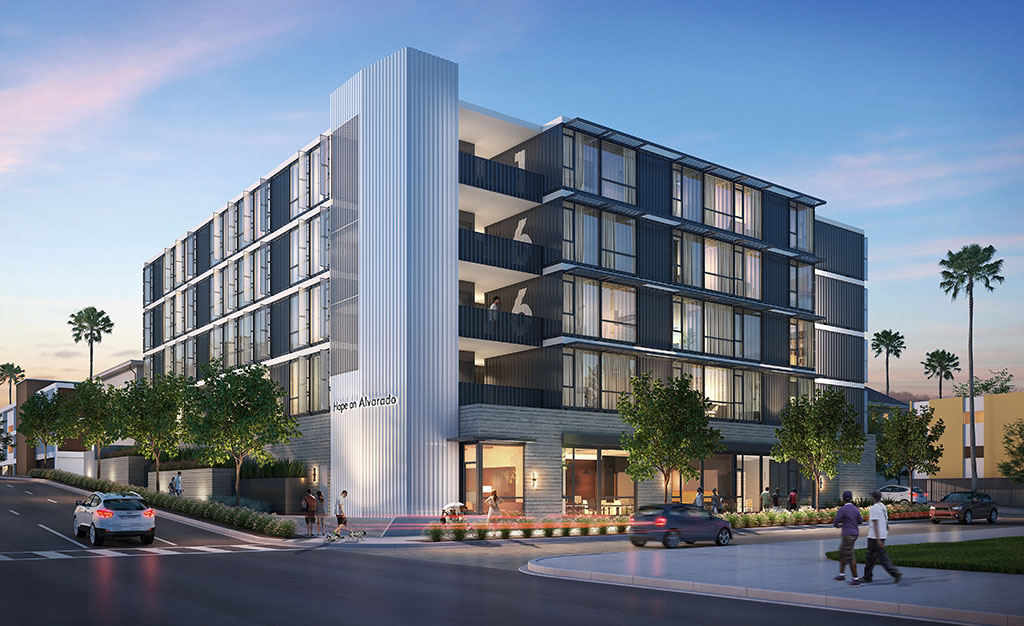
Hope on Alvarado in Los Angeles. Rendering by KTGY Architecture + Planning
“The partners of the Hope On developments have devoted themselves to perfecting this modular solution because we believe it holds great promise for the housing crisis,” said Aedis Real Estate Group President Scott Baldridge. “This is not just a one-off project. It’s a series of places created with a highly replicable design that delivers housing at a speed and scale required by neighborhoods in need. And as Measure HHH brings more supportive housing to the city, we will continue to work with Mayor Eric Garcetti’s office and the various Council Districts on these and other solutions.
The accelerated completion times are due to the unique design: The building modules leverage the dimensions and material of containers for highly efficient transporting and construction.
Earlier this year, HBG Construction Corp. lamented the passing of its founder and former CEO, Max Azria, who three years ago set out to change the way the world is built.
“Max thought about things on a drastically large scale because he knew that was the only way to really effect change,” said Lubov Azria, who has now taken over as CEO. “We honor him in fulfilling this vision and delivering housing to those in need.”
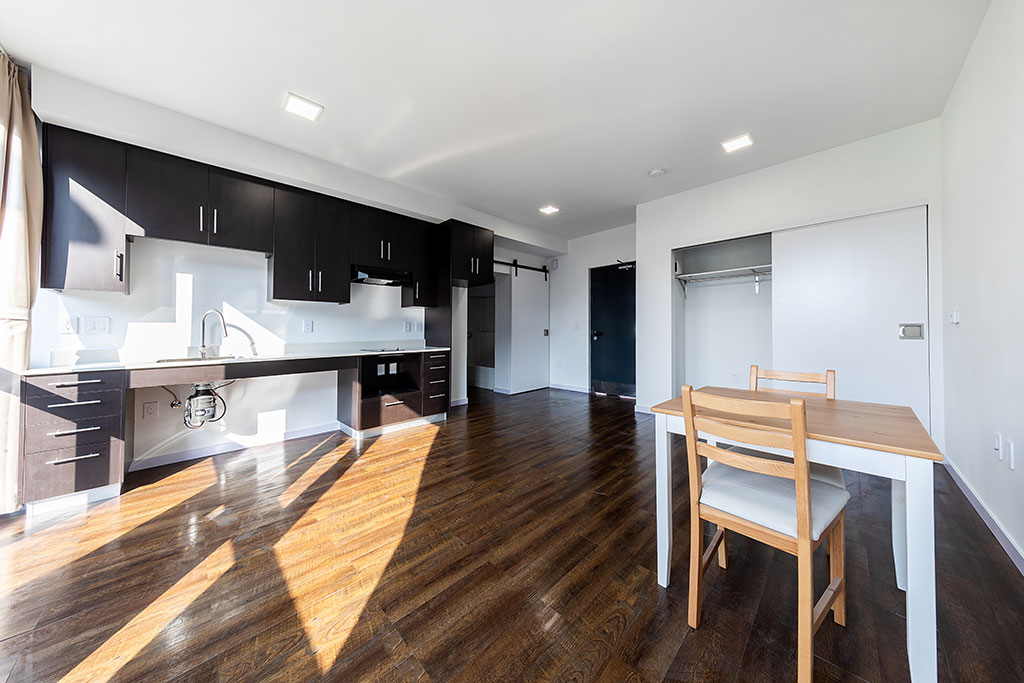
Alvarado interior by HGB Construction Corp. Photo by MARIO MACHADO PHOTOGRAPHY
Design and Construction
A collaboration of modular architect Peter DeMaria, chief design officer at HBG/Azria and KTGY Architecture + Planning, the modules are an innovative system applied to a historically tested and successful architectural design scheme, providing a social oasis for residents in the open-air courtyard.
“The Hope On team has advanced technology using steel modules that have the potential to radically transform modular housing,” said KTGY Architecture + Planning Associate Principal Mark Oberholzer AIA, LEED AP. “While site work and foundations are done on site, the modules are manufactured off-site, with customized interior finishes and fittings, resulting in highly efficient speed-to-market. The Hope On system accommodates larger-scale buildings on shorter time frames.”
- Modules are transported by truck to the site, crane-lifted and stacked into a single building.
- Each apartment is composed of several modules, modified specifically for the project.
- Floor-to-ceiling windows are completed off-site, as are interior fixtures and finishes such as drywall, tiling, bathrooms.
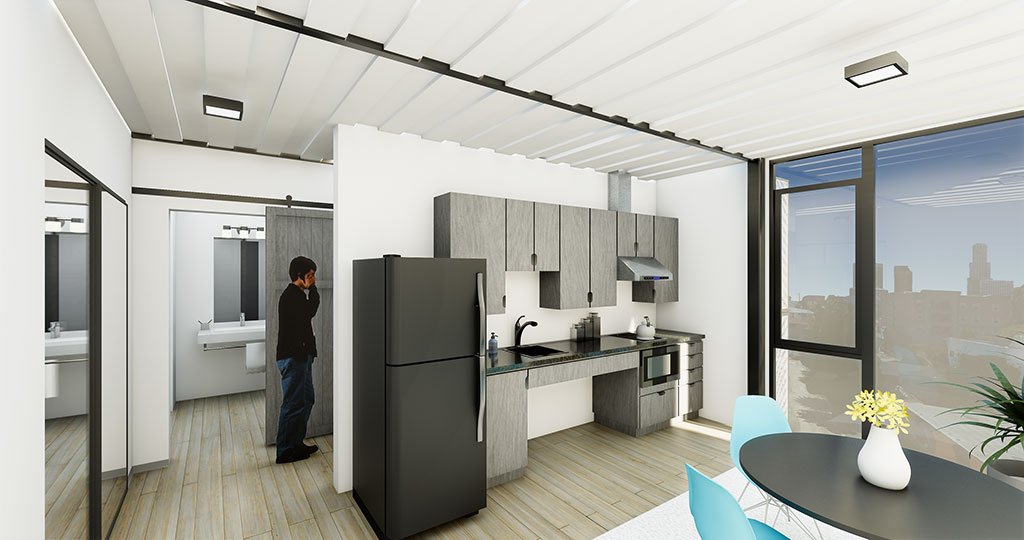
Rendering by KTGY Architecture + Planning
The design is centered on a central courtyard, providing privacy and encouraging safety and a sense of community. Floor-to-ceiling glazing distinguishes the support-services office space on the street-level. The development is designed to LEED standards but is not seeking certification. The speed of construction and efficient use of building materials is among the project’s sustainable attributes.
The five-story Hope on Alvarado project offers 84 units of studios and one-bedroom apartments on a .44-acre site. Unit plan sizes are 400-480 square feet. Social services staff will have independent offices and parking spaces, and each resident will have a bike-storage space.
The service provider at Hope on Alvarado is Homeless HealthCare Los Angeles.
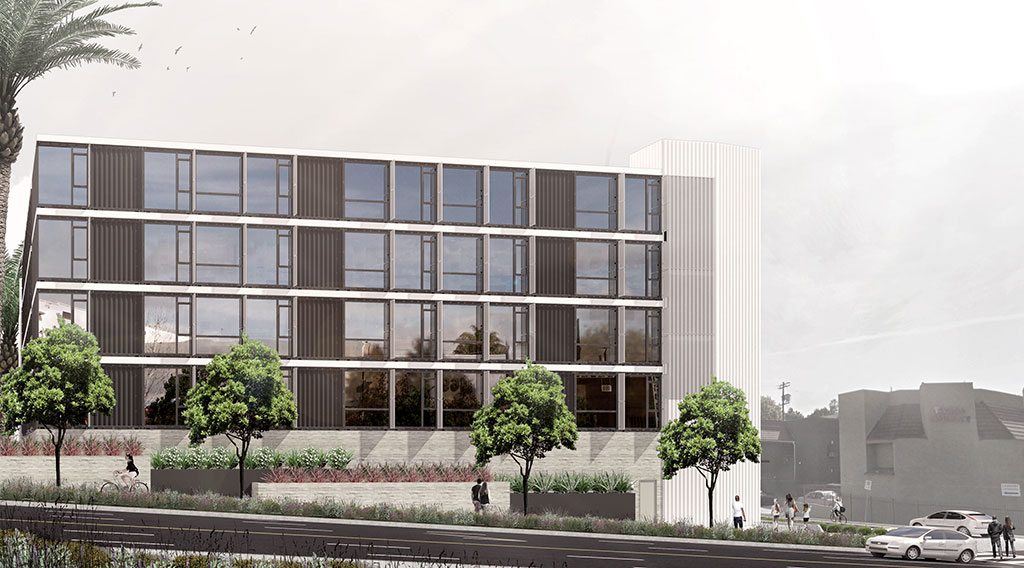
Rendering by KTGY Architecture + Planning
Upcoming Hope On Developments
Hope on Hyde Park – at 6501 Crenshaw Boulevard, at the intersection with Hyde Park and near the Crenshaw Line light rail – uses modules to create modern and affordable supportive housing for the Los Angeles chronically homeless population. The building is constructed around a central courtyard for privacy, safety and a deepened sense of community. The five-story, 98-unit Hope on Hyde Park property offers studios and one-bedroom apartments on a 0.49-acre site. Residential services and a small neighborhood serving retail space are located on the ground floor. Floor to ceiling glazing along the amenity space engages the community and brings movement to the street.
Hope on Broadway – at 52nd and South Broadway in South Los Angeles – will offer 49 residential units on a quarter-acre lot, in a transit oriented community (TOC). Ground breaking is set for early 2020 with grand opening in 2021. The building will offer supportive services for the formerly homeless, a roof deck, and a ground-floor podium that contains resident gathering space and offices for supportive services. The modern building design uses extensive glazing, metal siding and perforated metal in a monochromatic palette to emphasize the structural texture of the modular construction. Additional architectural detail is added on site, including a perforated steel entry canopy and sunshading.

